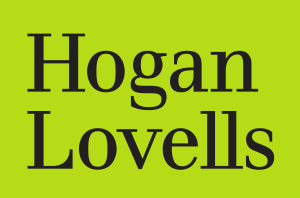Following the London High Court Judgment in the fraud case of Kazakhstan Kagazy Group v Zhunus, Arip and Dikhanbayeva which awarded $300m to Kazakhstan Kagazy, Hugh McGregor, the General Counsel of Kazakhstan Kagazy PLC, outlines the process that his firm followed to uncover and litigate what Lord Justice Longmore described as almost the 'perfect' fraud.
The High Court recently ruled that Kazakhstan Kagazy Group (KKG) had been subjected to a huge fraud by its former CEO, Maksat Arip. The claimants, advised by Robert Howe QC and Allen & Overy (A&O), successfully demonstrated that Arip and former finance director Shynar Dikhanbayeva had used sham contracts with ‘money funnel’ companies to misappropriate funds, including those raised in KKG’s London IPO. Having “won on trial on almost every point of substance in lengthy and fully contested action” KKG obtained judgment for $300m backed up with a freezing order.
The defendants both denied the frauds and simultaneously relied on Kazakhstan’s three-year limitation period: insisting that the claimants knew, or should have known, about the frauds earlier than claimed. Using this defence, two unsuccessful attempts were made to discharge the freezing order, one of which reached the Court of Appeal in 2014.
In rejecting this application, Longmore LJ stated: “This whole litigation leaves me uneasy. The essence of the limitation defence is that the Defendants’ fraud was so obvious that KK ought to have discovered it and issued proceedings before 2013. If the Defendants ultimately succeed on that defence, they might then have achieved the ‘perfect’ fraud. The money which has been stolen (over $100m) will become irrecoverable as a consequence of the judgment of the English court.”
The ‘Perfect Fraud’
The ‘perfect fraud’ is then one that is so well-concealed that it will not be uncovered before the limitation period elapses but, if discovered, seems so obvious that it appears the claim should have commenced much earlier. The defendants relied on expert opinion that Kazakhstan’s limitation period could commence once a potential claimant was aware of having suffered wrongdoing, without knowing the wrongdoer’s identity.
This was rejected following trial. Current management assumed control in 2009, but it was not until 2013 that sufficient evidence emerged to commence proceedings. So how did the defendants hide their misappropriation?
Kazakhstan’s buoyant economy in the 2000s and the subsequent financial crisis were pivotal. It has been a common feature of the Kazakh litigation reaching the English courts that many banks were lending without proper scrutiny prior to the global financial crisis. KKG’s former directors were closely connected to local banks, and it was easy for them to borrow heavily against development plans without worrying about project completion.
The financial crisis then helped to cover the defendants’ tracks, since given the global reduction in asset values IPO investors understood that they had bought at the top of the market. It was therefore expected that the business’s assets would be significantly marked down.
The defendants also took concerted steps to conceal the frauds, doing just enough work on the construction sites to convince investors that work was taking place, while putting down a paper-trail to justify payments to the related party entities. They did this with the complicity of KKG’s employees, who helped to manage the money funnel entities and produce the documentation required to move the funds out of KKG. Long after the defendants had left the business (and Kazakhstan), they continued to give instructions to KKG employees as to how to assuage any concerns raised by KKG’s auditors and the new management team.
Uncovering the fraud
Ultimately, the trail of sham documentation was crucial in proving the fraud. On joining KKG, I immediately had to deal with my predecessor’s dismissal: they were suspected of leaking information and assisting the defendants. The legal archives were left in disarray. As I started working through them, I found original documents signed by the defendants relating to the money funnel entities, even though the defendants ostensibly had no connection to these entities and therefore no reason to be approving contracts on their behalf.
These documents contradicted the defendants’ denials in cross-examination, as they provided what the judge held were “highly improbable and plainly invented explanations for the documents which contradicted [their] evidence.” When contemporaneous documentation contradicts a party’s evidence, English courts generally prefer the documents. A perfect fraud is difficult since fraudsters invariably have to rely on accomplices. With a lazy or incompetent accomplice, the fraud soon unravels.
In KKG’s case, some financial databases for the money funnel entities had been left on our IT systems. Grant Thornton’s forensic analysis revealed huge net cashflows out of KKG. The defendants had attempted to obscure these by continually shuffling balances between the money funnels and KKG entities. This was done via a web of generic contracts for the supply of materials, hard to verify construction works, and the assignment of fictitious debts.
Uncovering the frauds would have been futile had the limitation defence prevailed. The claimants had to demonstrate why they were not, and should not have been, aware of the frauds much earlier. Evidence of concealment played a considerable role in proving this. The misappropriation had also caused KKG to default on loans drawn-down (and misappropriated) by the defendants, meaning that the new management had initially been distracted by restructuring negotiations.
A level playing field
KKG was supported by Harbour Litigation. Ellora MacPherson, Harbour’s CIO, stated: “This is a prime example of the value that Harbour’s funding provides in supporting the claimant and securing a good result, particularly in a complex and fiercely fought claim such as this”.
Litigation funding can be invaluable for victims of fraud. Wealthy fraudsters routinely outspend their adversaries by dragging out legal proceedings, with expert defence lawyers burying claimants in security for costs and disclosure applications. In KKG’s case, access to third party funding matched the defendants’ legal firepower and we secured the right result.
Our case also underscores London’s position as a global centre of litigation. Ironically, the rule of law often attracts those who have benefited from corruption in their home countries, and who then seek to place their wealth in jurisdictions where property rights are protected by independent courts. As KKG’s case shows however, such individuals may then be vulnerable to claims in their adopted jurisdiction.




















